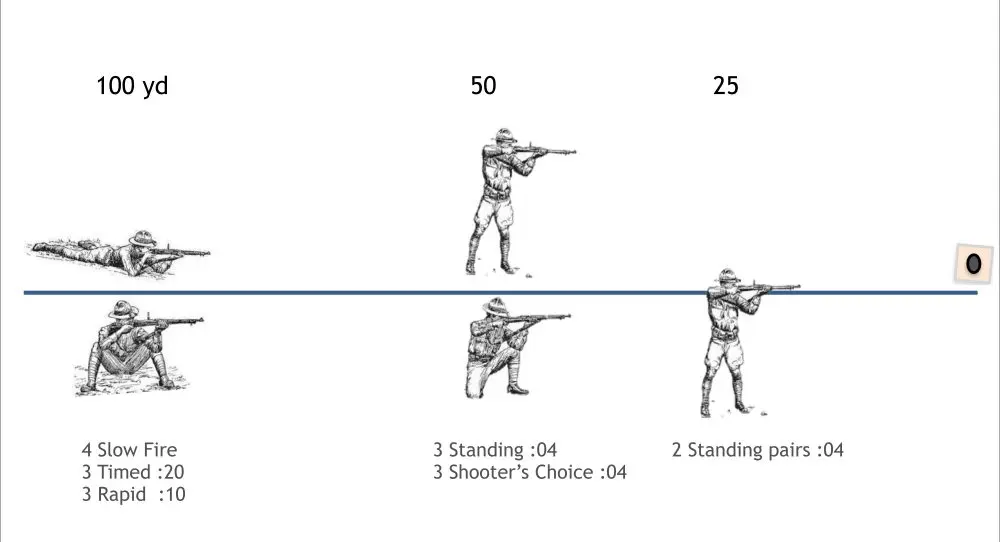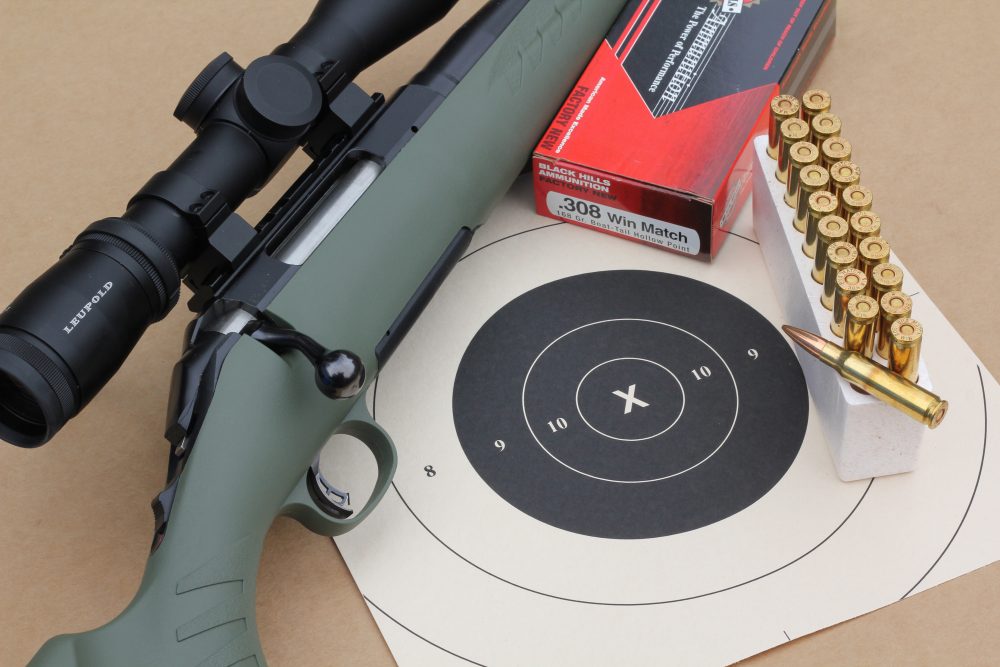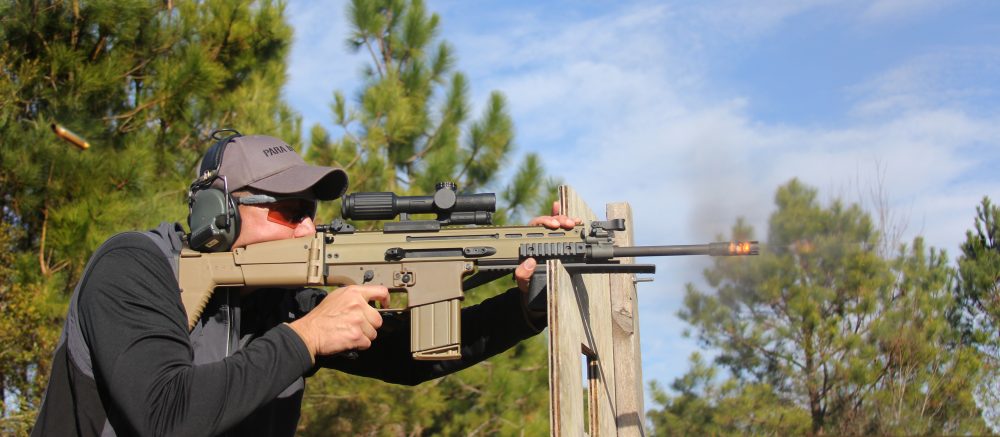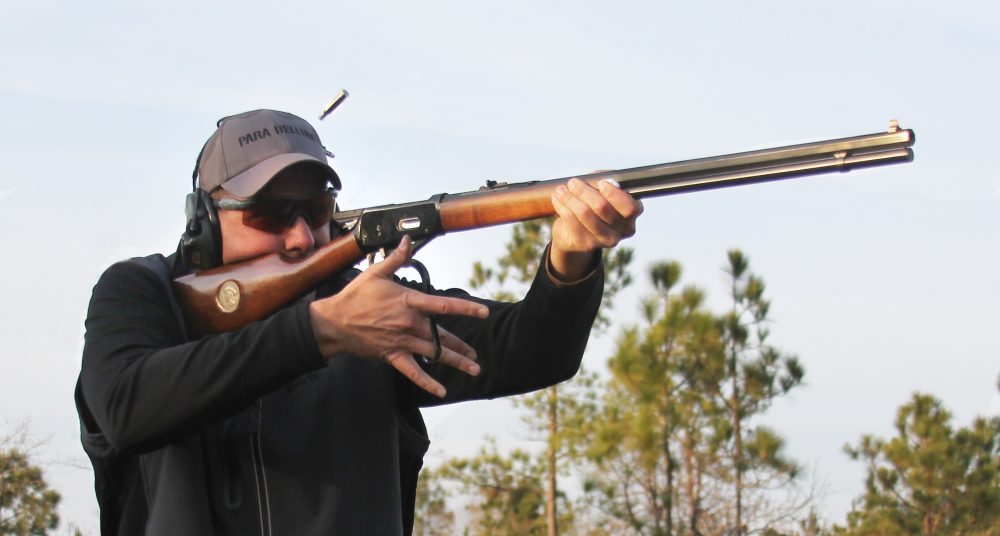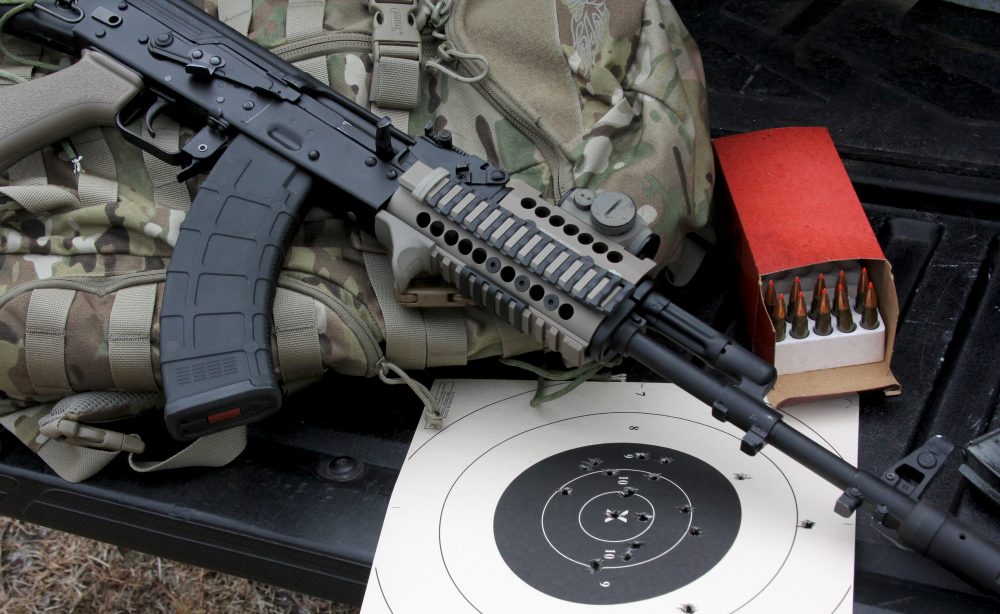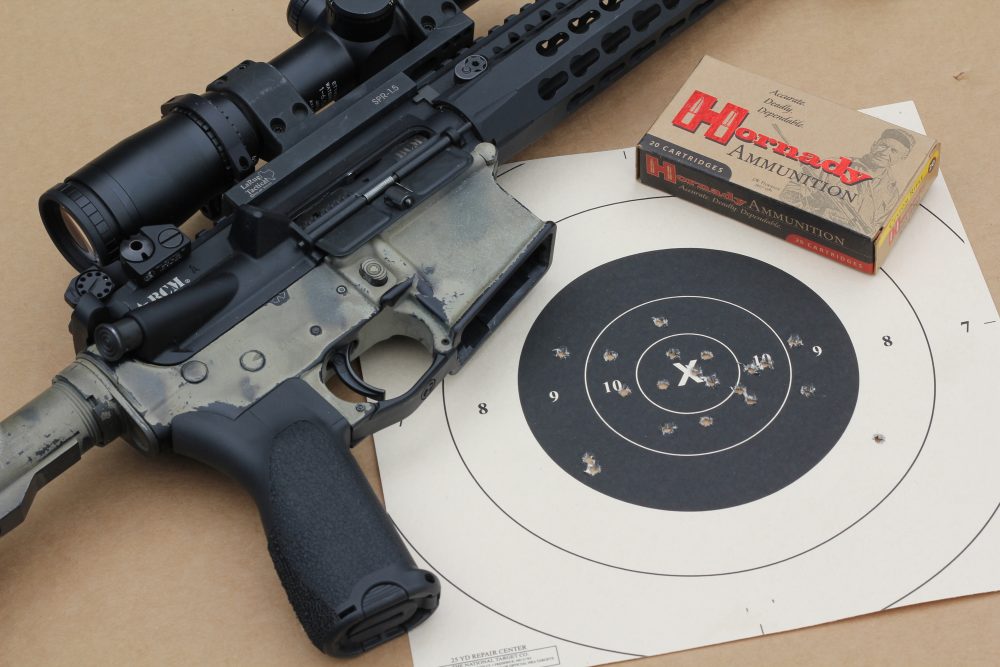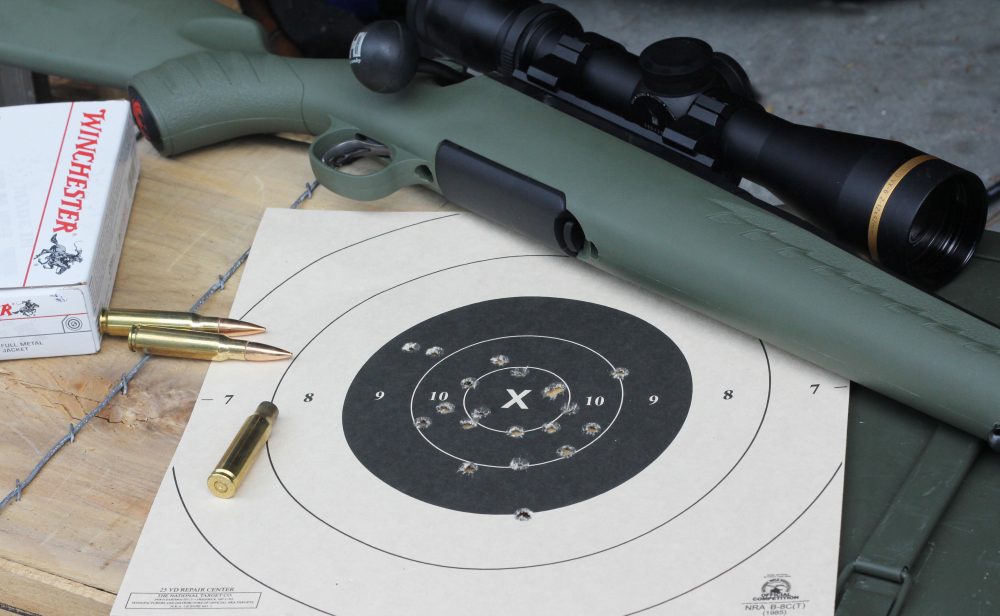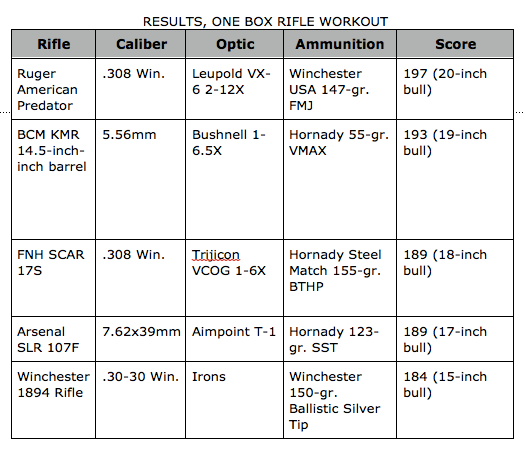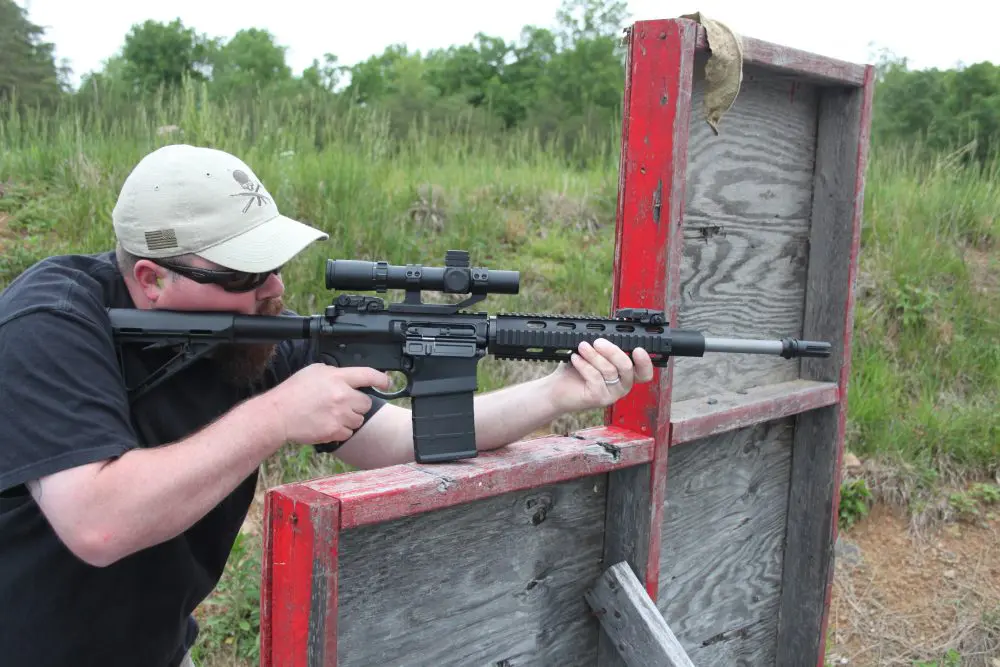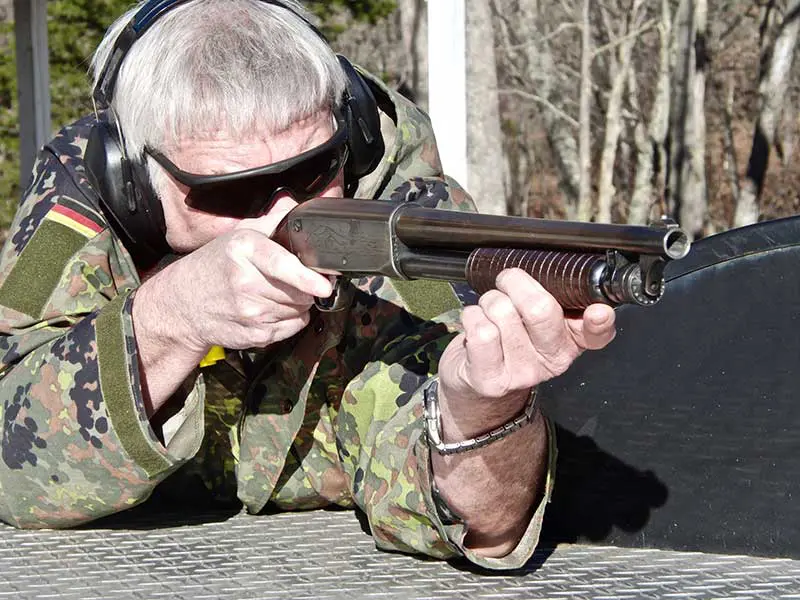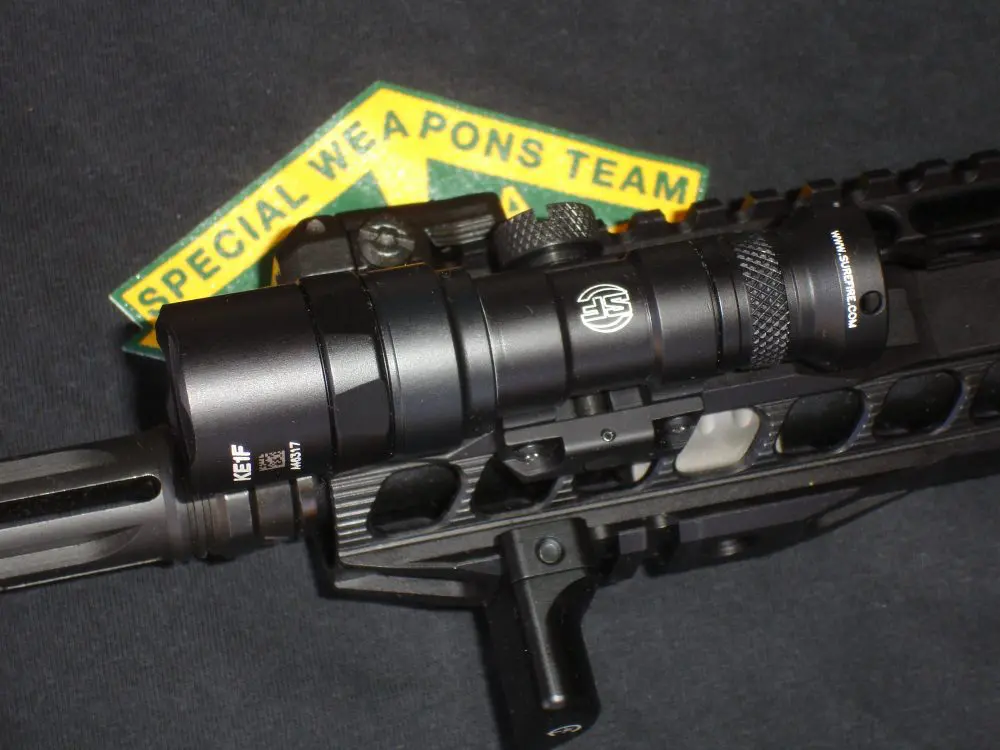Ruger American Predator with Leupold VX6 2-12X scored a 197. Once shooter can overcome bolt speed hurdle on multiple-shot strings, the bolt gun can stand its ground.
Rifle shooters often have a problem working on their skills. First, the ammo is prohibitively expensive. Second, the drills and courses of fire that exist are either tilted toward specific competitions such as high-powered rifle or toward rat-a-tat close-range carbine skills. The Mk 1, Mod 0 American Rifleman with his rifle tends to shoot some from the bench at 100 yards, fire off a token shot or five offhand, and then call it a day.
I recently noticed this and wanted for my own use a comparative drill that would incorporate the most common rifle skills in proportion, require a level of proficiency but be usable across all action types and optics, and be easy to conduct at most ranges.
Making it 20 rounds would allow a shooter to occasionally splurge for one box of ammo and dust off that rifle in the corner and “whup” it on. After a few tweaks, it’s working out very well and has been well received by a variety of shooters. It’s called, not ironically, the One Box Rifle Workout (1BRW).
The 1BRW is designed as a general-purpose rifle drill. It attempts to balance out the general utility of a rifle without focusing overly on any one application. It has proven equally useful as a baseline drill and skills check for hunting rifle, tactical carbine, or marksman’s rifle.
To shoot the drill, the rifleman needs a repeating rifle of some sort, 20 rounds, and one B8 5.5-inch 25-yard bullseye pistol target. The 1BRW has three stages, one each at 100, 50, and 25 yards.
Scoring is by the rings on the target for a total possible of 200 points. Late hits in the timed strings are noted and the shooter loses half the value of the corresponding best hit on paper; e.g., if the shooter has two tens on target and one late hit, one of the tens becomes a five.
One Box Rifle Workout gives rifleman a down and dirty workout with one 20-round box of ammo and a single target.
Table of Contents
STAGE 1: LONG RANGE
This is the first stage. I know that 100 yards isn’t particularly long, but it is easily accessible and hassle free for the majority of shooters. It is also still a long way in the majority of both tactical and wooded hunting applications.
A shooter can use just about any el cheapo spotting scope or the optic on the rifle to note the hits and adjust, as opposed to the longer yard lines. Food for thought is that a hit in the three-inch ten ring at 100 yards equals about three minutes of angle, a level of on-demand precision that will serve well out to the practical range of the rifle.
The shooter fires three strings of fire at 100 yards and can shoot from any position other than seated at a bench. Supported on a barricade, classic sitting, kneeling, or prone are all acceptable with a caveat: Only two of the three strings can use the same position. The shooter must fire one of the strings from a different position.
String One: Slow Fire
The shooter has no time limit to fire four well-aimed shots into the target at 100 yards. He can spot as he goes and make any necessary adjustments to the sights or optic. There are no additional shots, and all four shots must come from the same position.
String Two: Timed Fire
The shooter begins aimed in at the target and ready to fire. Upon the start signal, he has 20 seconds to fire a total of three rounds into the bull.
String Three: Rapid Fire
The shooter begins aimed in at the target and ready to fire. Upon the start signal, he has ten seconds to fire a total of three rounds into the bull.
Long-range stage allows shooter to incorporate barricade support for some strings.
STAGE 2: SNAP SHOTS
The shooter moves to the 50-yard line. Each of the six shots has a time limit, or par time, of four seconds.
String Four: Standing
Shooter begins standing with the muzzle elevated as in a field carry position and upon the signal, mounts the rifle, disengages any safety, and engages the target in a time limit of four seconds. This is repeated twice for a total of three shots from standing.
String Five: Hasty Position/Shooter’s Choice
Shooter again begins standing with the muzzle elevated as in a field carry position and upon the signal, assumes a firing position, mounts the rifle, disengages any safety, and engages the target in a time limit of four seconds. The shooter may stand for these shots if he desires. No barricades are allowed at the 50-yard line. The most common hasty positions used on this string are military squat and hasty kneeling. Prone is an option if the shooter can get into the position and fire within the time limit.
This is repeated twice for a total of three shots. Multiple positions may be used for the three shots at the shooter’s option.
Drill is designed to accommodate all action types and sights, such as this commemorative Winchester ’94 lever-action .30-30.
STAGE 3: PAIRS
The shooter moves to the 25-yard line for the final stage. The target is engaged from the low ready with safety engaged with two shots in a time limit of four seconds from standing. This is repeated once for a total of four shots.
BRACKETS
The workout translates to several levels of proficiency. At the entry level, where a shooter is still learning a particular rifle or action type, there is keeping all shots on the ten-inch center, which quickly progresses to keeping all hits inside the eight-inch “8” ring. This is where most shooters live.
Next is the bragging rights level of keeping all shots within the 5.5-inch bull. If you find a shooter who can consistently do this, he is a real top hand. With irons or a red dot, I am more focused on that level of achievement than score per se. I take a similar approach with a rack-grade rifle that may not hold the ten-ring.
Arsenal AK with Aimpoint did well on the drill, challenging popular notions of AK accuracy and shootability.
But whenever the gear allows, I push myself to max the course and get as near to a perfect score as possible. I have not yet seen a shooter score a possible on the drill, but it is eminently doable and that barrier will undoubtedly be broken soon.
The 1BRW gets a lot done with one box of ammo. It is an enjoyable drill that has enough difficulty to push the shooter to perform, but is achievable for all skill levels. Shooters will find themselves grabbing long-neglected hunting rifles and seeing what they can do on the drill, comparing scores across their rifle racks.
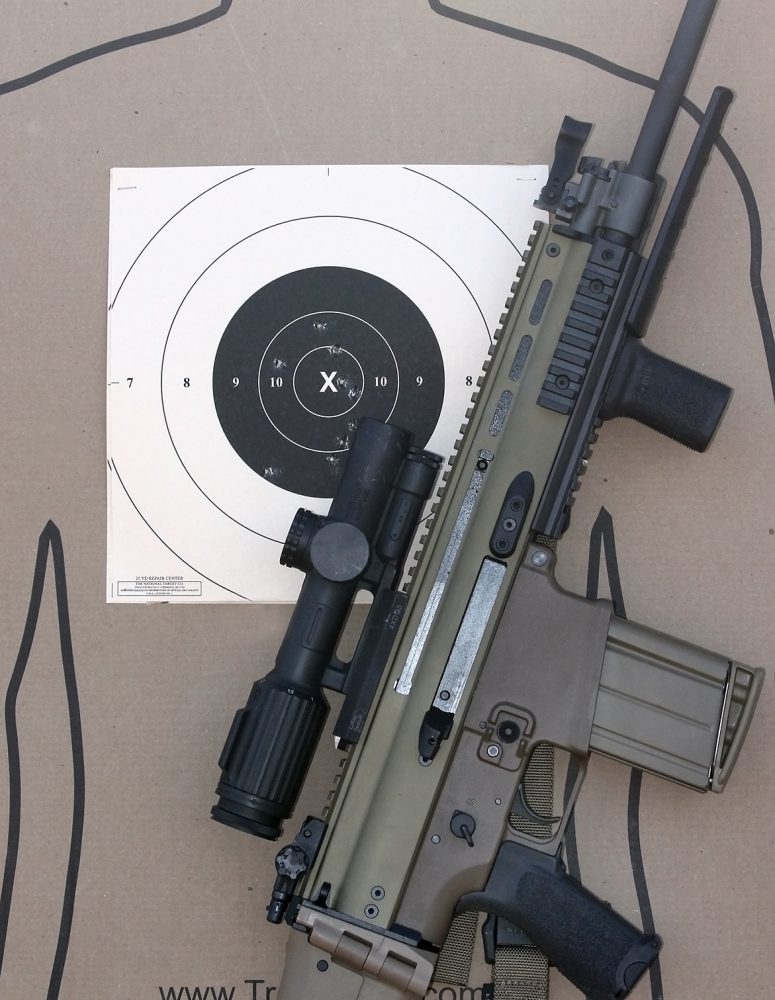
RESULTS
I’ve shot the workout with a pretty diverse selection of rifles, as you can see in the results chart (at bottom). The drill favors the same factors that slant toward success in real life. Self-loading rifles allow more time and focus to shoot well without having to work the action.
Magnified optics are genuinely helpful, but irons and red dots are perfectly capable and competitive on the drill. In fact, the scores on the ’94 Winchester were slightly skewed when I realized after slow fire that I had to offset hold slightly, and the rest of the long-range shots struck the bull.
Trigger quality matters on a rifle. The Ruger Predator bested the SCAR 17S even with the challenge of running the bolt on the clock, due largely to the Ruger’s exceptional trigger. But this was not the case until I became more proficient at running the bolt on that rifle.
My first attempts with the Ruger came in about ten points lower and behind the SCAR. While talking about the .308s: Recoil matters. It was “easier” to post quality scores with the 5.56mm BCM AR with BCM Gunfighter Compensator than with either of the .308 rifles, since recovery was very quick. But the times are just long enough to get through the .30-caliber recoil with good technique on the multiple-shot strings.
Another point that may surprise some shooters is the balance of time and precision at 50 yards. Some shooters score better and more consistently applying the relatively short time to “dressing up” a well-aimed shot standing rather than going to a knee or squatting.
A hit on a 5.5-inch bull at 50 yards is no gimme, however, and other shooters will find they need support and have to learn to get it quickly.
Quality AR is well suited to the 1BRW, where the ergonomics and lack of recoil allow it to shine. This BCM has a possible inside it, just waiting for the shooter to have more discipline.
The requirement to change positions within the strings at 100 yards can show the shooter useful data. I’ve seen shooters mix and match a wide variety of positions. There is no one best approach.
One AR shooter may be best off kneeling from a barricade on the slow fire and then shooting prone for the timed and rapid. Another may be faster working the bolt from another position and choose prone for the slow fire. I personally try to see which positions work best with a certain platform, and most of the scores in the chart reflect slightly different approaches.
The workout is not necessarily a “tactical” drill, but it reflects real skills that translate into the work gun. The drill focuses on the “rifle” part of the long gun as opposed to the more typical pistol-range abilities.
Ruger American Predator with Leupold VX6 2-12X scored a 197. Once shooter can overcome bolt speed hurdle on multiple-shot strings, the bolt gun can stand its ground.
The 1BRW is a pretty solid warm-up or cool-down to a more aggressively oriented training session with the carbine. For unit use, I would expect to have all shooters over 175 points.
I’ve enjoyed the drill so far. It is simple enough that non-standard attempts dance in my head for future range days: Handgun attempt? Slugs from my Benelli? Vintage service rifles?
Good luck and good shooting. If you max the drill, let us know!
Ethan Johns is a military professional with worldwide experience in specialized units. He has taught and been responsible for numerous advanced skills and weapons courses within multiple organizations.
